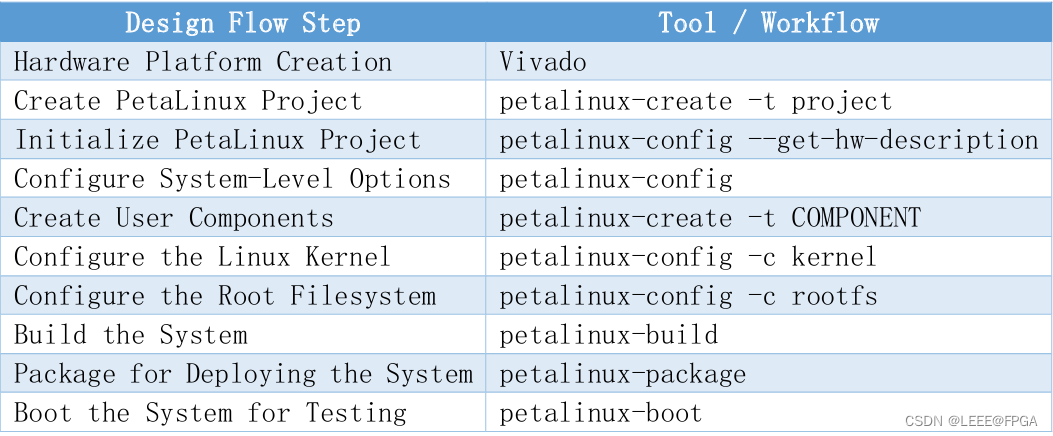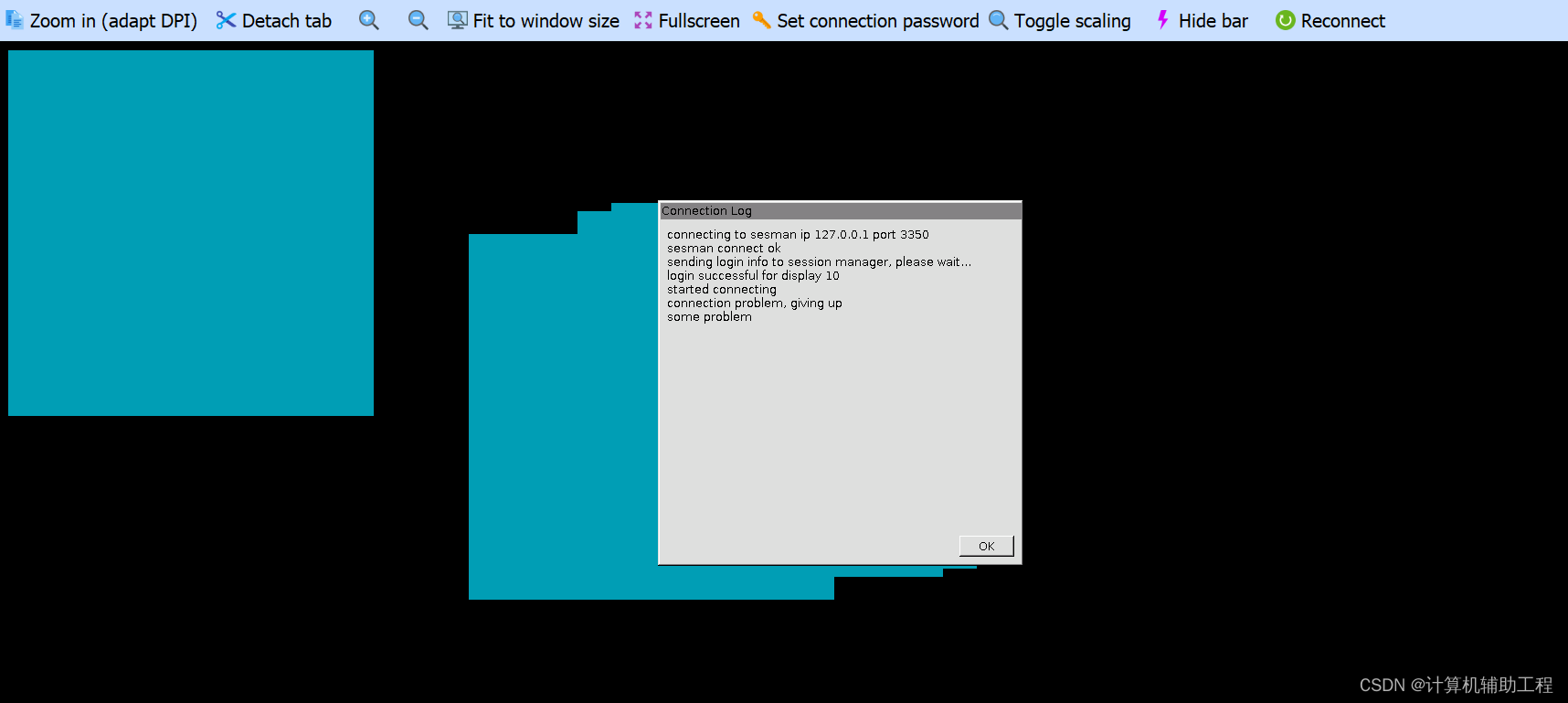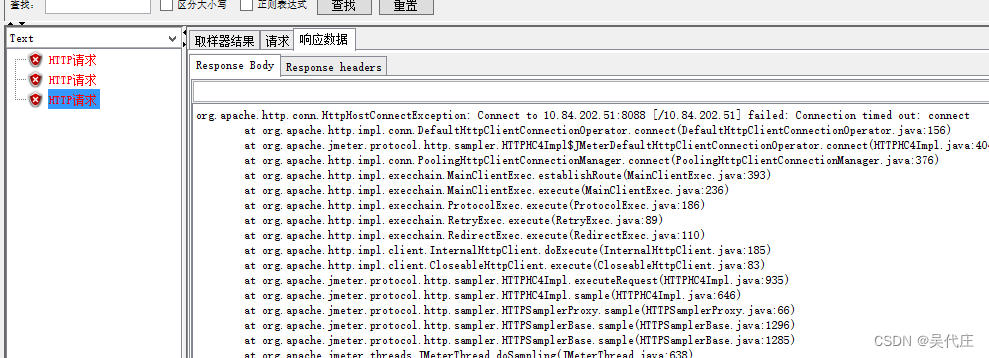前言
研究人员首次提供了一个在线远程平台,用于对生物神经元进行实验。瑞士生物计算初创公司FinalSpark推出了Neuroplatform,该项目使用16个人脑类器官来开发所谓的世界上第一个活体处理器,也称为生物处理器。
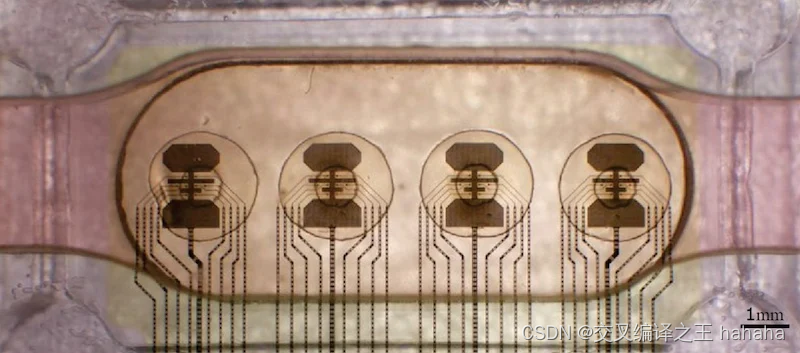
用于 Neuroplatform 的多电极阵列分为四组,每组 8 个电极。
与传统处理器非常相似,这些生物处理器可以学习和处理信息,但功耗要低一百万倍。
What Is
Computing?
什么是湿件计算?
This research falls under the category of wetware computing, which uses a mixture of hardware, software, and biology. The term wetware comes from “wet software,” referring to the software within a living organism—that is, the instructions contained within DNA. Similar to wetware computing, organoid intelligence is a field focused on biological computing using 3D cultures of human brain cells.
这项研究属于湿软件计算的范畴,它使用硬件、软件和生物学的混合体。“湿软件”一词来自“湿软件”,指的是生物体内的软件,即DNA中包含的指令。与湿件计算类似,类器官智能是一个专注于使用人脑细胞 3D 培养物进行生物计算的领域。
FinalSpark’s research intersects wetware computing and organoid intelligence because it uses living neurons to perform computations. While the concept closely resembles how artificial neural networks (ANNs) are used in computing today, new methods must be developed for these biological systems.
FinalSpark的研究与湿软件计算和类器官智能相交,因为它使用活神经元来执行计算。虽然这个概念与当今人工神经网络(ANN)在计算中的使用方式非常相似,但必须为这些生物系统开发新的方法。
Neuroplatform’s Hardware Architecture
Neuroplatform的硬件架构
FinalSpark’s remote biocomputing platform relies on hardware to preserve homeostasis, monitor environmental parameters, and perform electrophysiological experiments. Users can interact with the hardware using a graphical user interface (GUI) or via Python scripts.
FinalSpark的远程生物计算平台依靠硬件来保持体内平衡、监测环境参数和进行电生理实验。用户可以使用图形用户界面 (GUI) 或通过 Python 脚本与硬件进行交互。
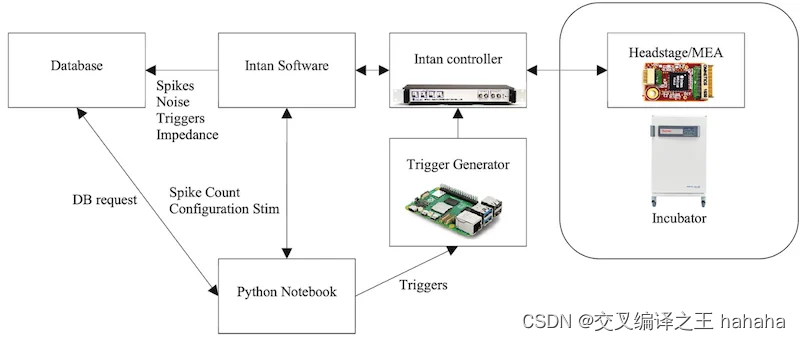
Neuroplatform’s general architecture.
Neuroplatform 的一般架构。
Taking a closer look at the hardware, FinalSpark’s Neuroplatform system uses four multi-electrode arrays (MEA) to capture real-time measurements of cellular activity. It also includes electrodes that stimulate and record electrical activity between each other. A closed-loop microfluidics system supplies Neuronal Medium to sustain the life of organoids on the MEA. The platform also leverages cameras for each MEA to capture still images or video recordings. Finally, Neuroplatform uses UV light-controlled caging systems to release molecules with a specific wavelength of light that breaks molecular cages when they contain a neuroactive molecule.
仔细研究硬件,FinalSpark的Neuroplatform系统使用四个多电极阵列(MEA)来捕获细胞活动的实时测量值。它还包括刺激和记录彼此之间电活动的电极。闭环微流体系统提供神经元培养基,以维持类器官在 MEA 上的生命。该平台还利用每个 MEA 的摄像头来捕捉静止图像或视频记录。最后,Neuroplatform使用紫外光控制笼子系统来释放具有特定波长光的分子,当分子含有神经活性分子时,这些光会破坏分子笼子。
Although the materials in FinalSpark’s Neuroplatform differ from that of traditional computing, many concepts remain the same between both.
尽管 FinalSpark 的 Neuroplatform 中的材料与传统计算的材料不同,但两者之间的许多概念保持不变。
电极和晶体管Electrodes and Transistors
Both the electrodes in FinalSpark’s Neuroplatform and transistors in traditional processors are fundamental components that handle the transmission of electrical signals. In processors, transistors switch on and off to create binary data, while electrodes in the MEA system record and stimulate electrical activity in biological matter.
FinalSpark Neuroplatform 中的电极和传统处理器中的晶体管都是处理电信号传输的基本组件。在处理器中,晶体管打开和关闭以创建二进制数据,而MEA系统中的电极记录并刺激生物物质中的电活动。
测量和数据处理Measurement and Data Processing
The MEA system can measure and record real-time cellular activity, similar to how processors handle real-time data processing. Both systems gather data, process it, and potentially act upon it.
MEA系统可以测量和记录实时蜂窝活动,类似于处理器处理实时数据处理的方式。这两个系统都会收集数据,对其进行处理,并可能根据数据采取行动。
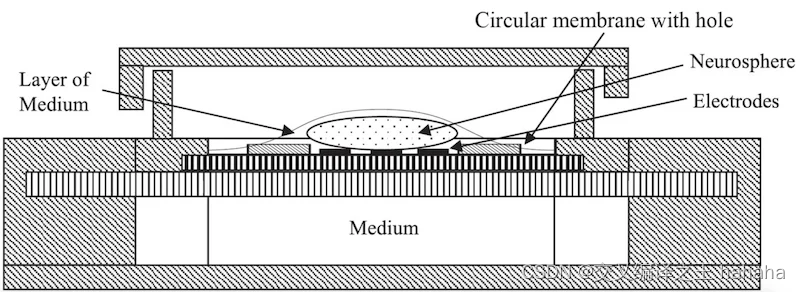
Cross-sectional view of the MEA setup.
MEA设置的横截面图。
微流控和冷却系统Microfluidics and Cooling Systems
The closed-loop microfluidics system for sustaining organoids is somewhat analogous to cooling systems in traditional processors. Both systems are essential for maintaining the optimal operating conditions of their respective computational hosts.
用于维持类器官的闭环微流体系统有点类似于传统处理器中的冷却系统。这两个系统对于维持各自计算主机的最佳运行条件至关重要。
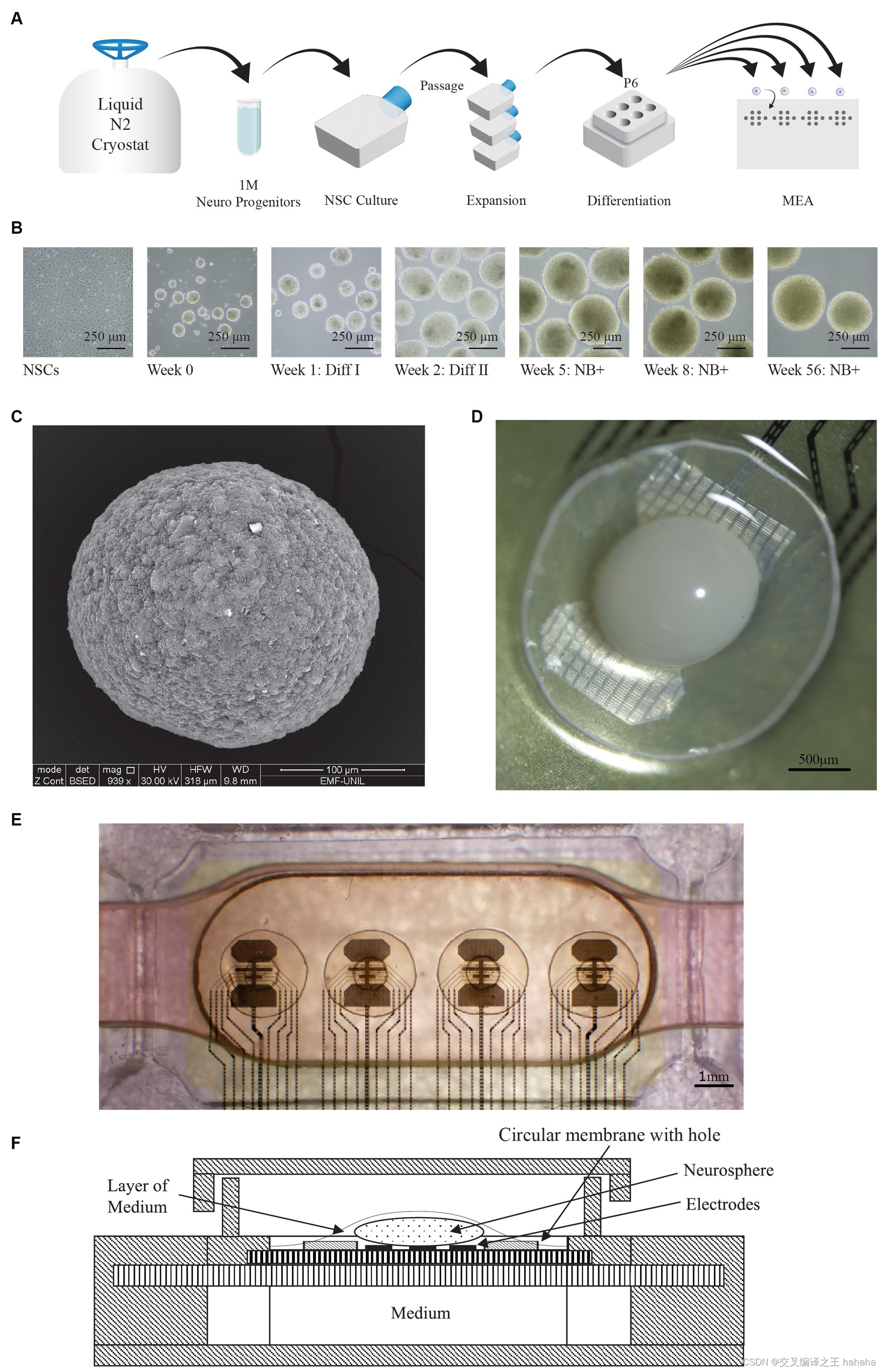
相机和诊断工具Cameras and Diagnostic Tools
Cameras in the Neuroplatform system capture images or videos, which can be considered a diagnostic tool similar to how monitoring software tracks the performance of computer processors. While FinalSpark’s Neuroplatform and traditional digital processors share some similarities in their use of electrical signals and real-time data processing capabilities, they differ in their construction, purpose, and operational mechanisms.
Neuroplatform系统中的摄像头捕获图像或视频,这可以被视为一种诊断工具,类似于监控软件跟踪计算机处理器性能的方式。虽然 FinalSpark 的 Neuroplatform 和传统数字处理器在使用电信号和实时数据处理能力方面有一些相似之处,但它们在结构、目的和操作机制方面有所不同。

One stark contrast between digital processors and bioprocessors is their potential for sustainability and reduced power consumption. While a single LLM such as GPT-3 requires 10 GWh (6,000x the yearly consumption of a European citizen), the human brain operates with approximately 86 billion neurons and consumes only 20 W of power. This suggests that bioprocessors, if one day viable, can act as sustainable replacements for an ANN.
数字处理器和生物处理器之间的一个鲜明对比是它们在可持续性和降低功耗方面的潜力。虽然像 GPT-3 这样的单个LLM需要 10 GWh(欧洲公民年消耗量的 6,000 倍),但人脑运行着大约 860 亿个神经元,只消耗 20 W 的功率。这表明,如果有一天可行,生物处理器可以作为人工神经网络的可持续替代品。
免费用于研究目的 Free for Research Purposes
Access to Neuroplatform is free for research purposes. This allows participants to conduct real-time experiments on biological networks and replicate results in their own lab. FinalSpark’s infrastructure currently only enables seven research groups to use the platform at a time, but the company is in the process of scaling up hardware to accommodate more users. The scalability of such a system with hundreds or thousands of users is not clear.
出于研究目的,可以免费访问 Neuroplatform。这允许参与者在生物网络上进行实时实验,并在自己的实验室中复制结果。FinalSpark的基础设施目前只允许七个研究小组同时使用该平台,但该公司正在扩大硬件规模以容纳更多用户。这种拥有数百或数千用户的系统的可扩展性尚不清楚。
期刊原文 Open and remotely accessible Neuroplatform for research in wetware computing
wiki百科 湿件计算名词

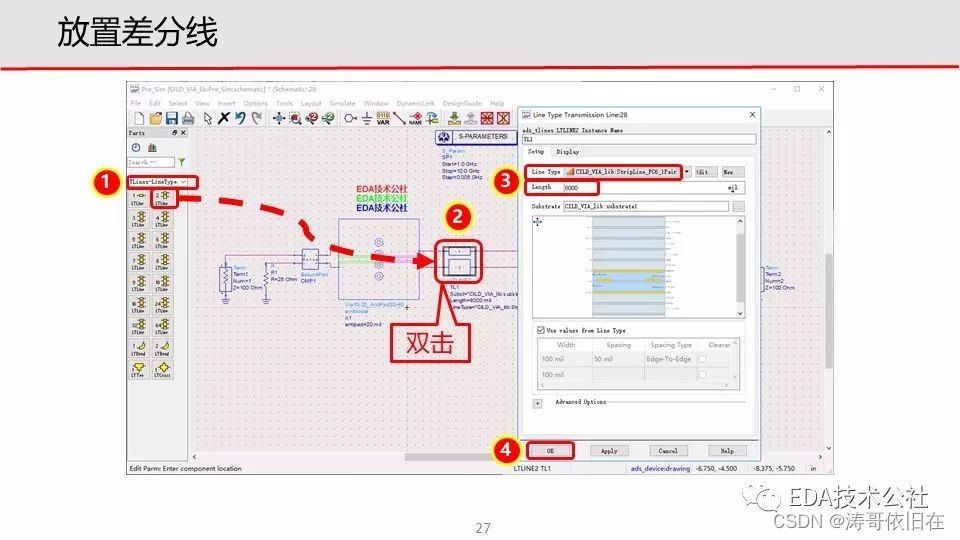



![LeetCode - 贪心算法 (Greedy Algorithm) 集合 [分配问题、区间问题]](https://img-blog.csdnimg.cn/direct/b023f7cbce564612830e58c7a2f174d2.png)

